I’ve picked up again The Club (Η Λέσχη), the first book of Stratis Tsirkas’ Drifting Cities trilogy (Ακυβέρνητες Πολιτείες, Στρατή Τσίρκα). I started it years ago but never finished it. Couldn’t appreciate it at the time and found it confusing. But after my last trip to Jerusalem, the book practically begged to be read.
Not only is the writing beautiful but I now have such a better sense of the place and even the time in which it is set: Jerusalem during World War II. And as one reviewer of the book has said, Jerusalem is the main character in the book.
My very first trip to the city was in the summer of 1986. I was only 25 then (yes, you’re allowed a calculator to figure out my age!) and quite ignorant of history so that the family stories that had fascinated me since childhood could not be pinned down on a timeline but rather floated in my head in a hazy time frame. I had no sense, for example, that when Yiayia Vitsa was born in 1905, Palestine was still under the Ottomans so that I might wonder how she had experienced the transition to British rule as a young girl of 12. Nor did I know about the Arab Revolt of 1936-39 to ponder how it might have affected my grandfather’s business or the family’s daily life.
The only historical milestone that was clear in my head was 1948 when, just before the end of the British Mandate, the family hastily escaped the fighting in their city, fully intending to return, but instead ended up as refugees dispersed around the world. Everything that happened to them was either before or after 1948—not unlike the BC/AD delineation! I suspect that in their heads the same distinction holds true.
On that first trip, I met up with my mother in Jerusalem after a week of backpacking through Israel on my own. It was her first time back. The little I remember of the city is due to the photographs I took. And since at the time photography was on film and film was expensive, both to buy and develop, I was shooting sparingly and my memories of the place are equally sparse.
What has remained with me through the years are strong visual and emotional imprints of special moments and incidents: my mum’s tears of instant recognition as we approached the old city for the first time; the surreal moment of bumping into two ladies she knew from back then, as they chatted in the sun, just down the street from the Greek Orthodox Patriarchate; and, most memorably, finding the Kassotis house in Katamon—their house, our house. (I will write a more detailed account of that trip in a later blog post.)
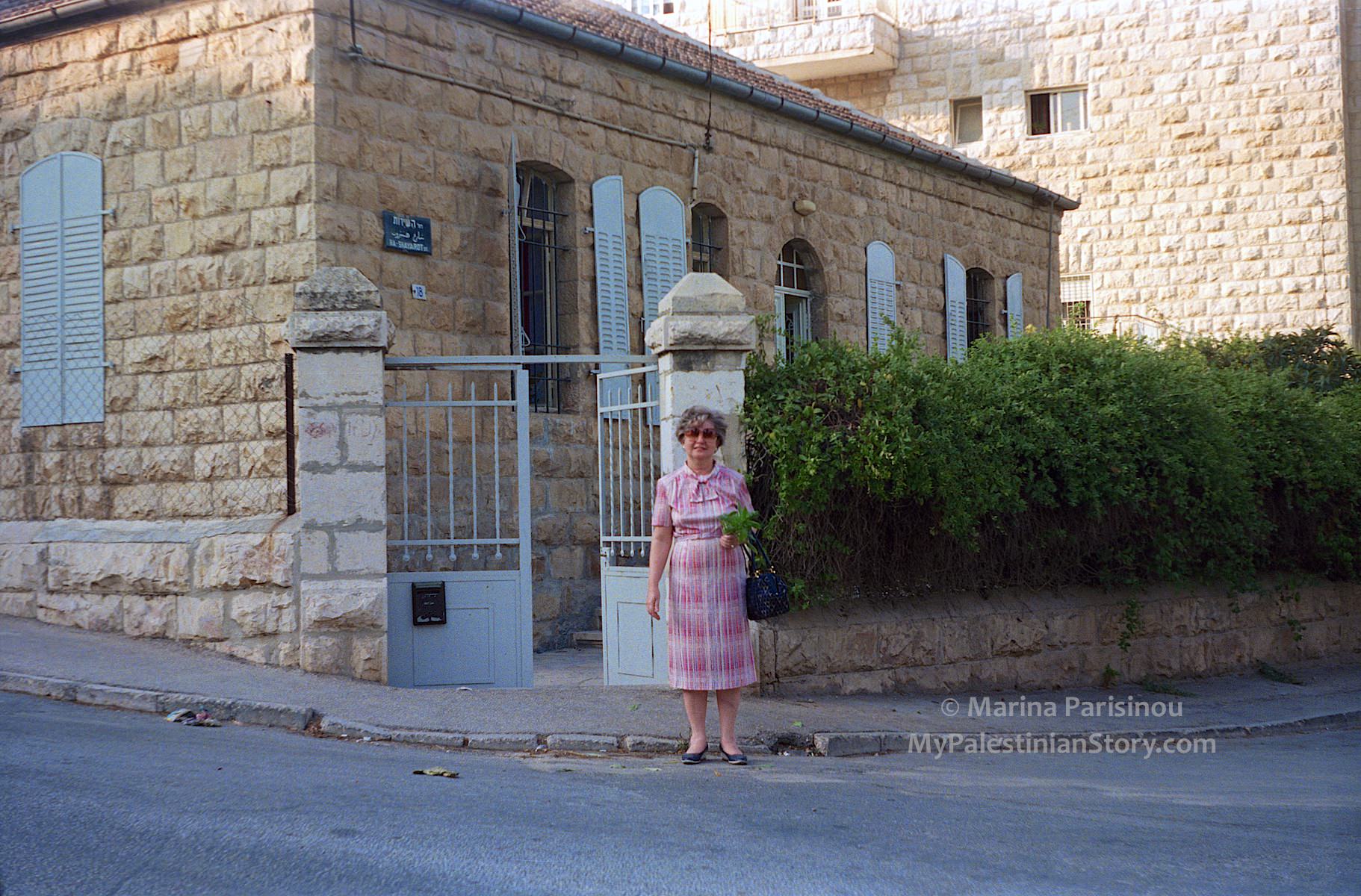
My second trip to Jerusalem was last July (2014), instigated by the Katamon Project. Dorit Naaman, the project owner, with whom I’d been in communication over Skype for the previous six months, was on sabbatical there doing research and as I would be in Cyprus again for the summer, it made sense to visit for an in-situ meeting.
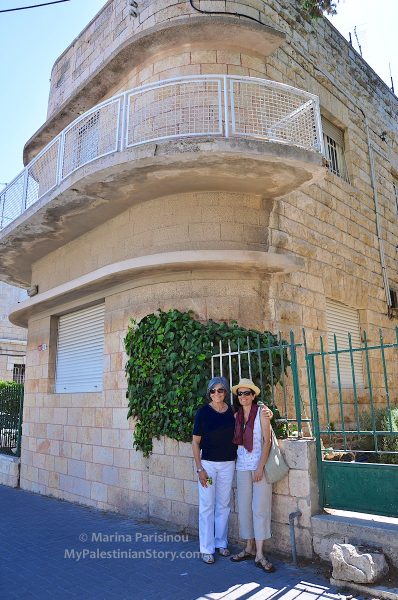
where Ellie was born and raised in Baqa’a – Jul 2014
The visit was short, only five days, for the first three of which I was accompanied by Ellie Savvidou (née Louisidou) an old Jerusalemite friend of the family, and her daughter who was also participating in the project. The eruption of the Gaza war, soon after our arrival, put a damper on our activities. While Ellie was with us, we naturally focused on her and her past—the house where she was born and raised in Baq’a, her father’s property in Katamon and even her dancing at the Greek Club.
I had just enough time on my own to make some initial contacts in the Greek community, to look at our house which is no longer a house but rather a three-storey apartment building, to search fruitlessly for other family homes and to look for and at the eleventh hour find the grave of Great-Great-Grandfather George Schtakleff, the very first Schtakleff in Jerusalem.
The geography of the place defied me both in the neighbourhoods where my family lived, worked and played—Katamon, Greek Colony, German Colony, Baqa’a (all of which are part of what is today known as West Jerusalem)—and in the web of alleys of the old city where I would consistently and frustratingly lose my way.
I look on that trip as a reconnaissance mission. I met people who I knew could help me find more information and I had a first look at places about which I could ask more questions of my family afterwards even if at the time I couldn’t find my way from one to the other. I got a sense of the lay of the land so I could be more effective the next time round.
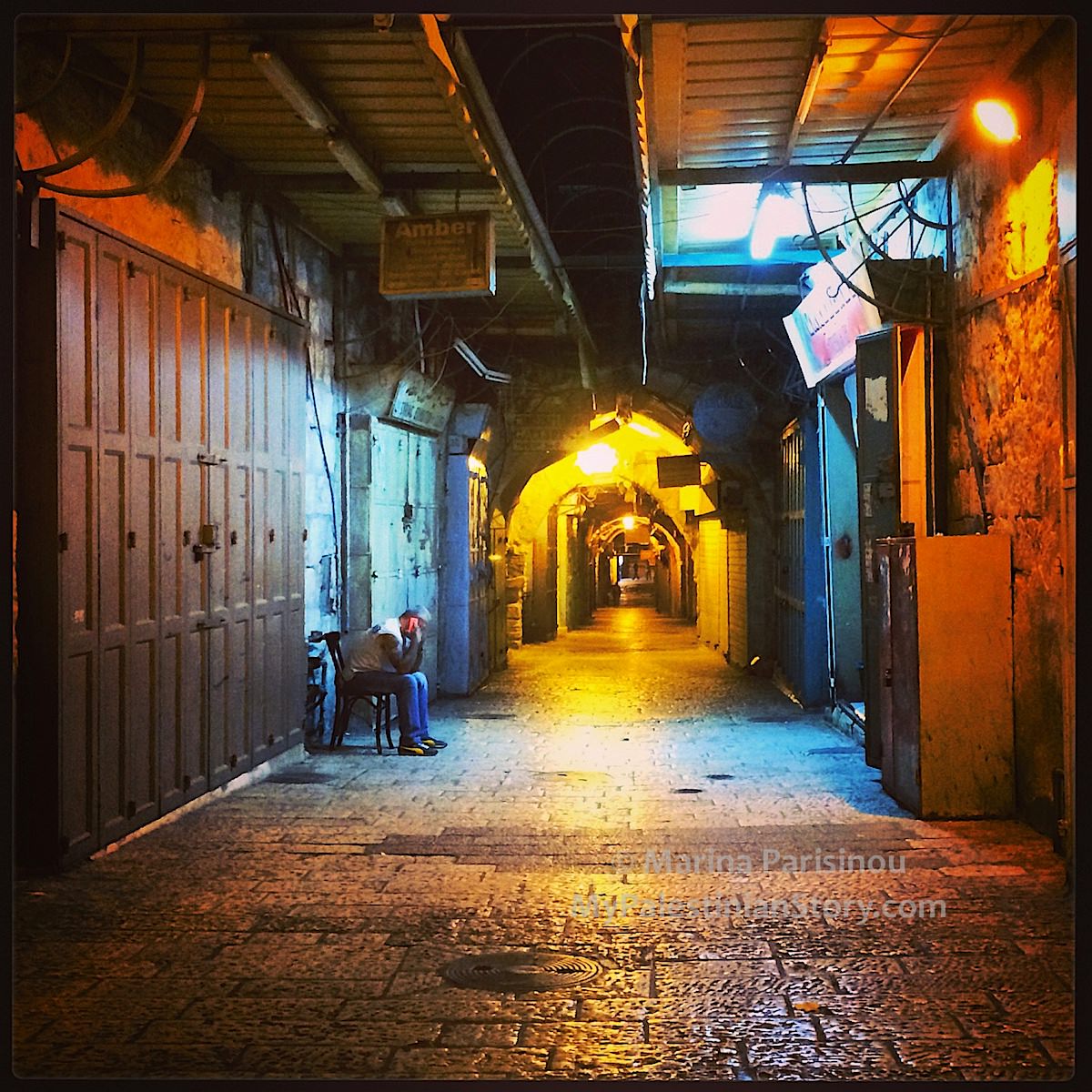
This year I returned for a longer period of time and better prepared. I had asked questions from relatives across the globe; I had been drawn maps and diagrams; I had made contacts with people ahead of time.
Dorit was there again for the summer and for a couple of weeks she was joined by her new key collaborator, my friend Mona. The product of a Jerusalemite mother, Mona has been researching Palestinian history for years and in the process has amassed thousands of photoraphs of Jerusalemites (which she now displays on a Facebook page).
Dorit’s always welcoming home was command centre for the Katamon Project and a place for all of us to escape the heat of the day or enjoy a cosy meal with her hospitable family. I’d join Dorit and Mona to review their resources and findings many of which became useful pieces in my own personal puzzle: a 1946 aerial map helped narrow down which houses I should consider in my search; a 1947-48 phone book listed names of family and friends—to my infinite delight; the wonderful books of architectural historian David Kroyanker which document Palestinian homes in West Jerusalem provided important clues (translated by Dorit on the fly as they are only published in Hebrew); an introduction (thanks to Mona) to Kroyanker’s wife and collaborator, Leorah, yielded further clarifications.
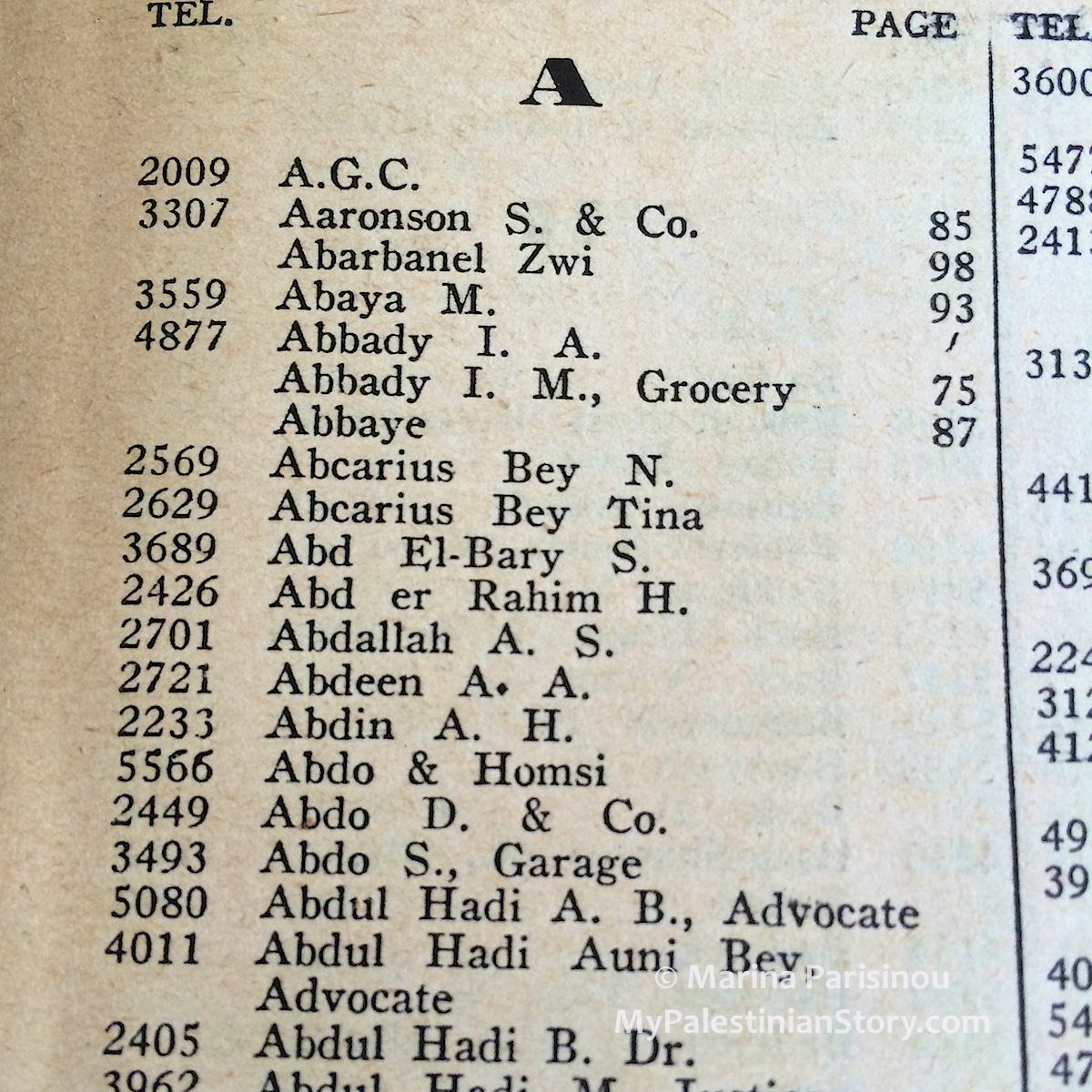
This year I also managed to make contact with Mamelo Gaitanopoulos, cousin of aunt Jenny on the other side of the family—but still family. Mamelo’s parents never left Jerusalem (in fact, my mother and I had met uncle Stratis and aunt Aliki in our 1986 visit) and so the city has remained his home through the years. And although he was only a child in 1948 and spent many years abroad later on, Mamelo, who still lives in his ancestral home, has strong memories from those days and proved invaluable in my efforts to discover where aunts and uncles lived. He became my veritable Dr Watson.
Initially I planned to stay for ten days. Three days into my stay, Anastas Damianos, the head of the Greek Club, put me in touch with a young Greek scholar who has been conducting ethnographic research in Jerusalem, focusing on the Greek Community. George Tsourous, a PhD student at the University of Kent , has been in Jerusalem for over a year and has come to know everyone and everything. Within a few hours of meeting him it became apparent that I needed to extend my stay to take full advantage of the knowledge and contacts he was more than happy to share. And he was only too pleased to follow a personal story. So I postponed my departure for five days and for a week and a half George and I developed a wonderful synergy—and a friendship,
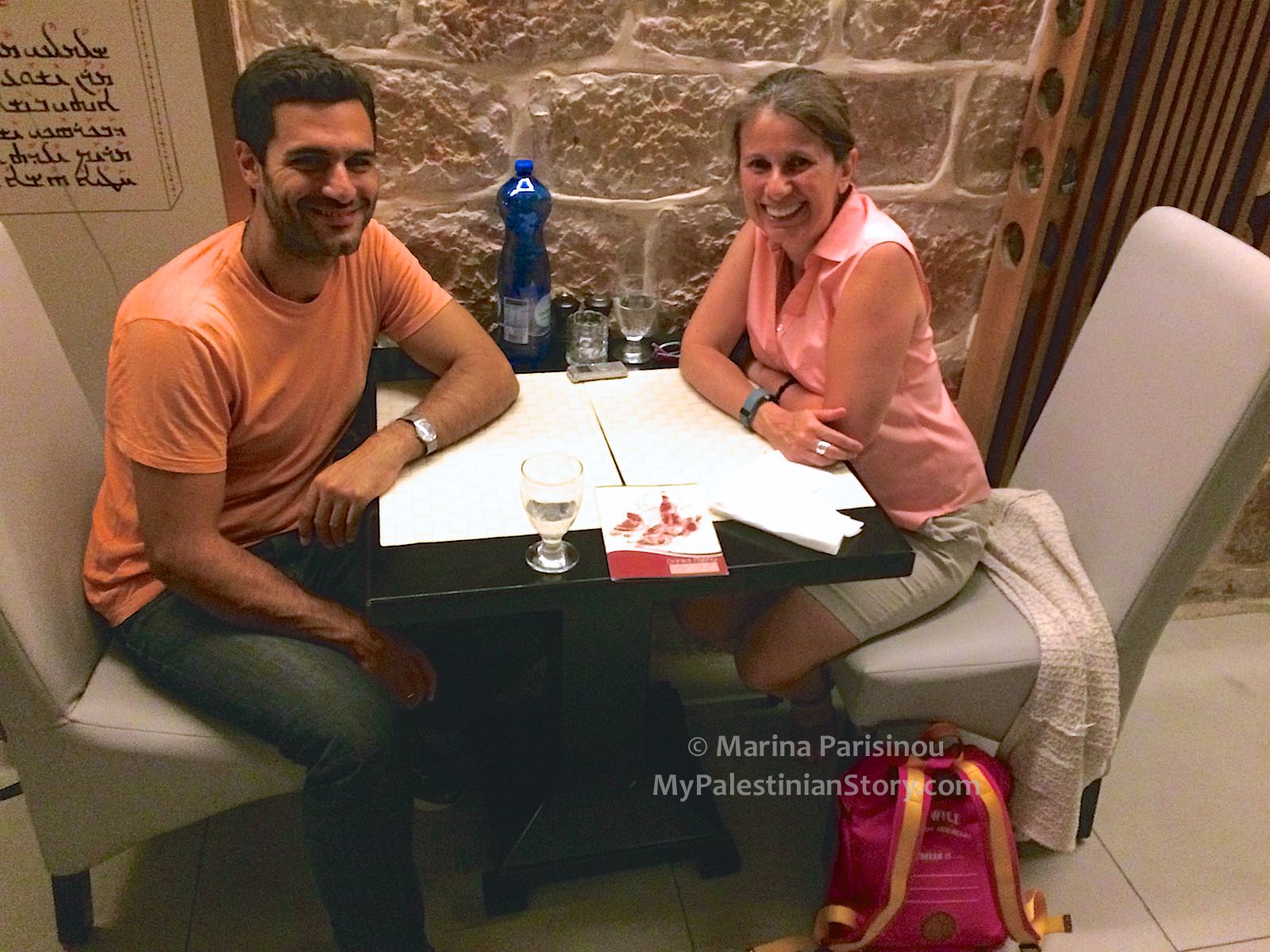
It’s no exaggeration to say that without Mamelo and George, I would have accomplished very little this time and I’m most thankful to both—as I am to Dorit, Mona and everyone else who assisted me in my efforts.
My days were filled with rich and diverse, frequently emotionally intense experiences. In the course of a single day I could be playing “regular” tourist – shopping in the Arab suq, ‘doing’ the sights, taking pictures galore; spending time with the “Katamon ladies”—visiting friends of Mona’s in Bethlehem (who happened to know several family members), attending a meeting of Katamon Project participants; and actively pursuing my own research—searching for official records with George, scoping out houses in West Jerusalem with Mamelo.
I thought I’d be blogging daily on my findings but I simply had no time to write never mind process in my head everything I was experiencing. I will do that in the weeks to come in several subsequent blog posts. Stay tuned! ❖
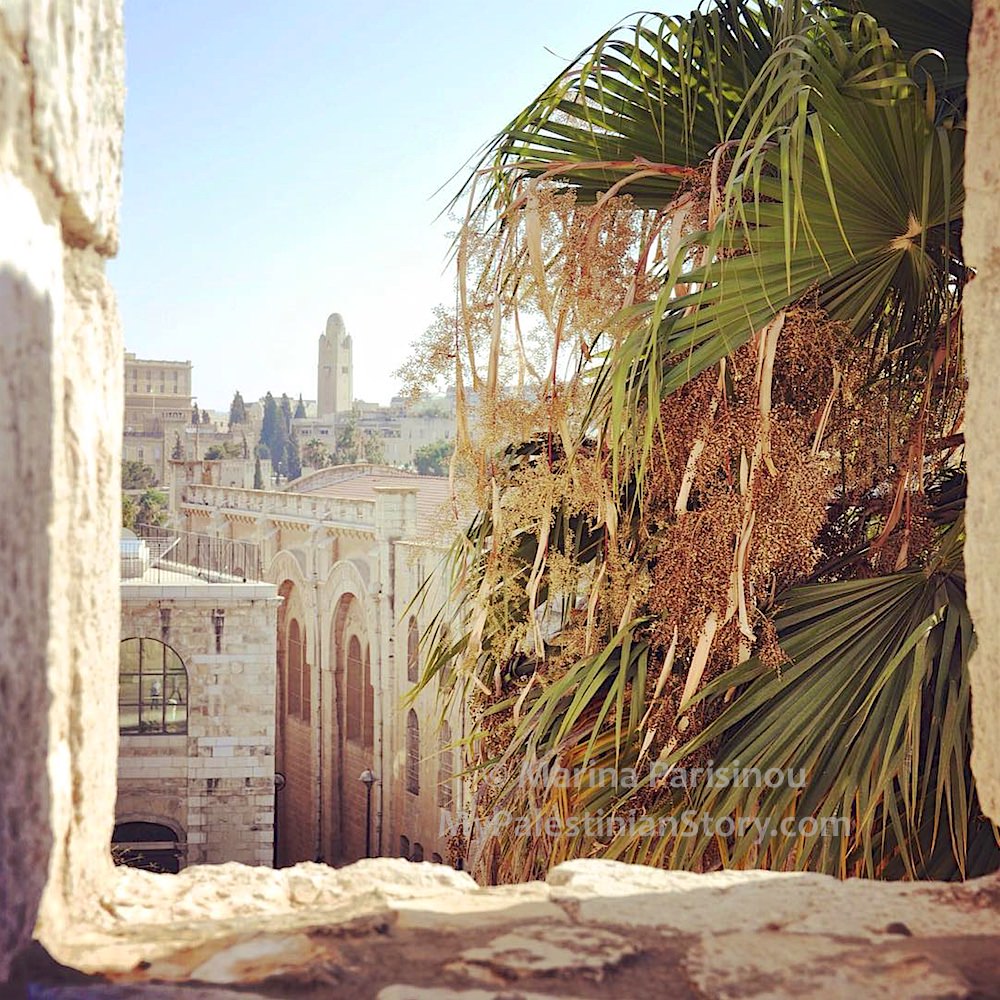

I grew up in the same community as your mother and the rest of your family. Your story is not complete and I would like to help you with more details. Send me an email With questions and I will answer. Thanks for starting your story. Ari
Ari, my story is a work in progress. Many thanks for offering to be a resource! I’ll gladly take you up on it and will follow up with an email shortly.
Hi! I came across your blog when I did a search on my married last name. Mamelo is my father-in-law’s brother! Looks like we’re related, so cool!!! 🙂
Thank you for writing, Jen. So your father-in-law must be Demetris. I’m afraid my family tree goes as far as Stratis’s children (Demetris and Mamelo) and I have no further info about Demetris’s offspring. But feel free to drop me a line via email if you like or via the Contact page. Although we’re not related by blood, we’re still part of the same family… forest, if not exactly the same tree!